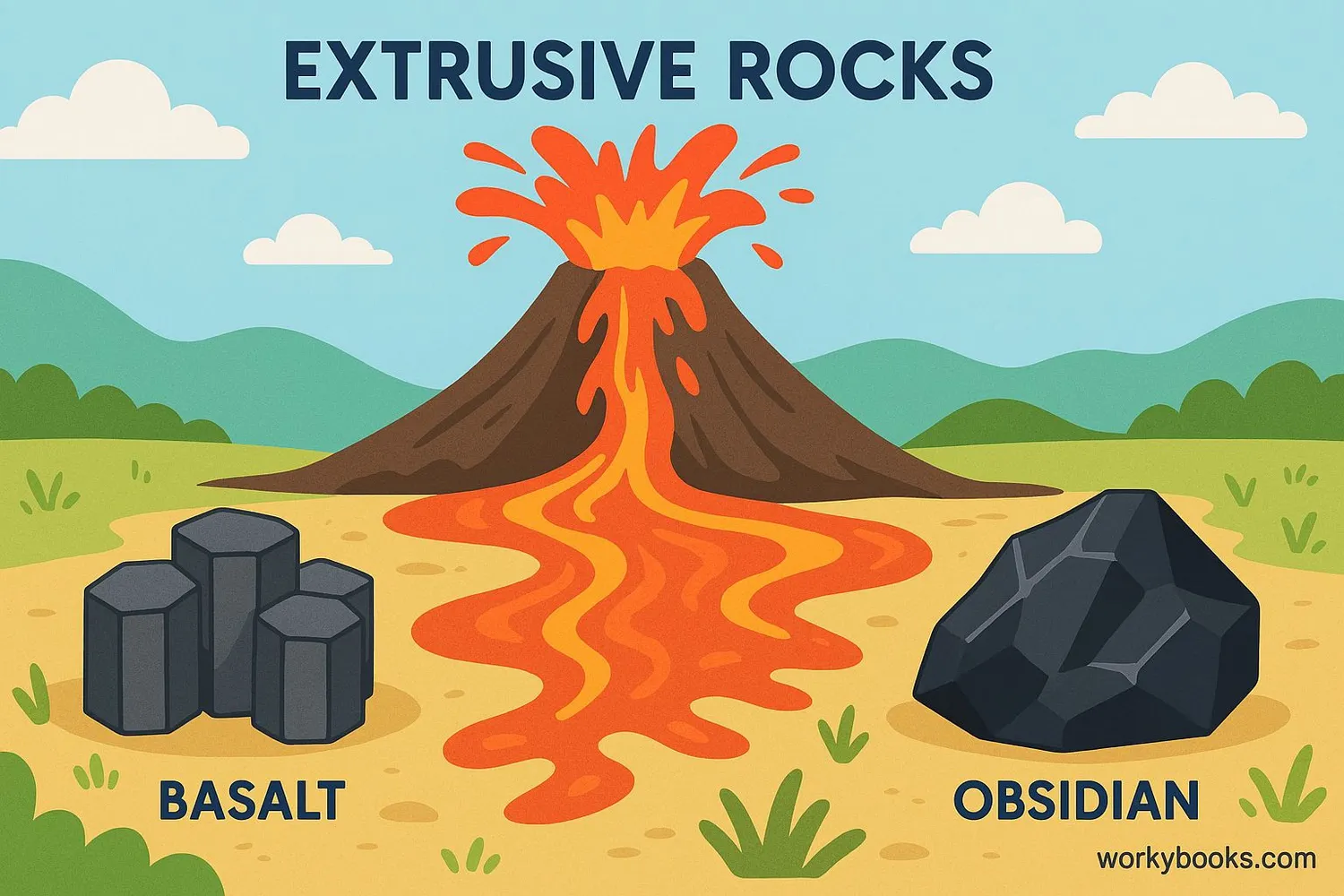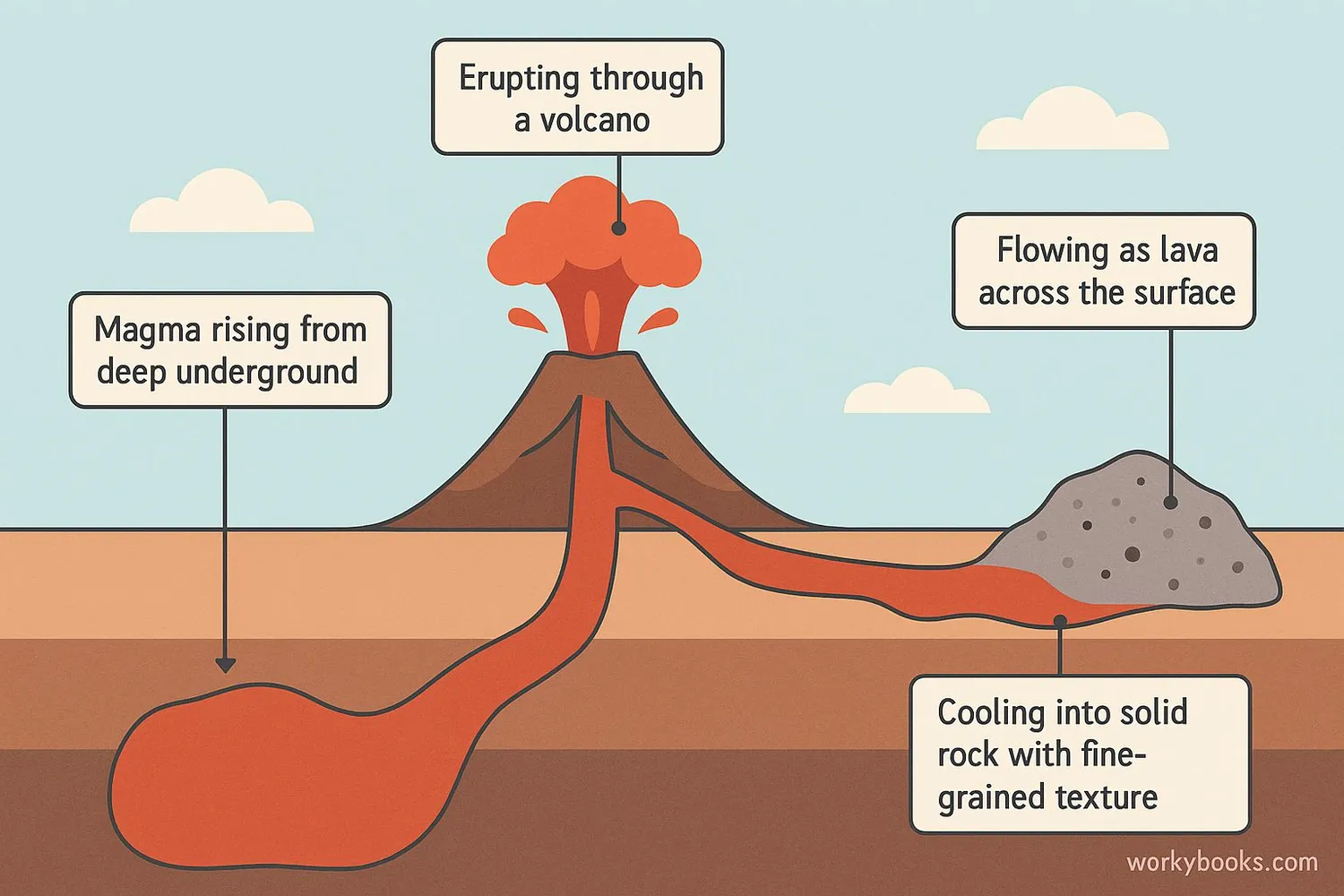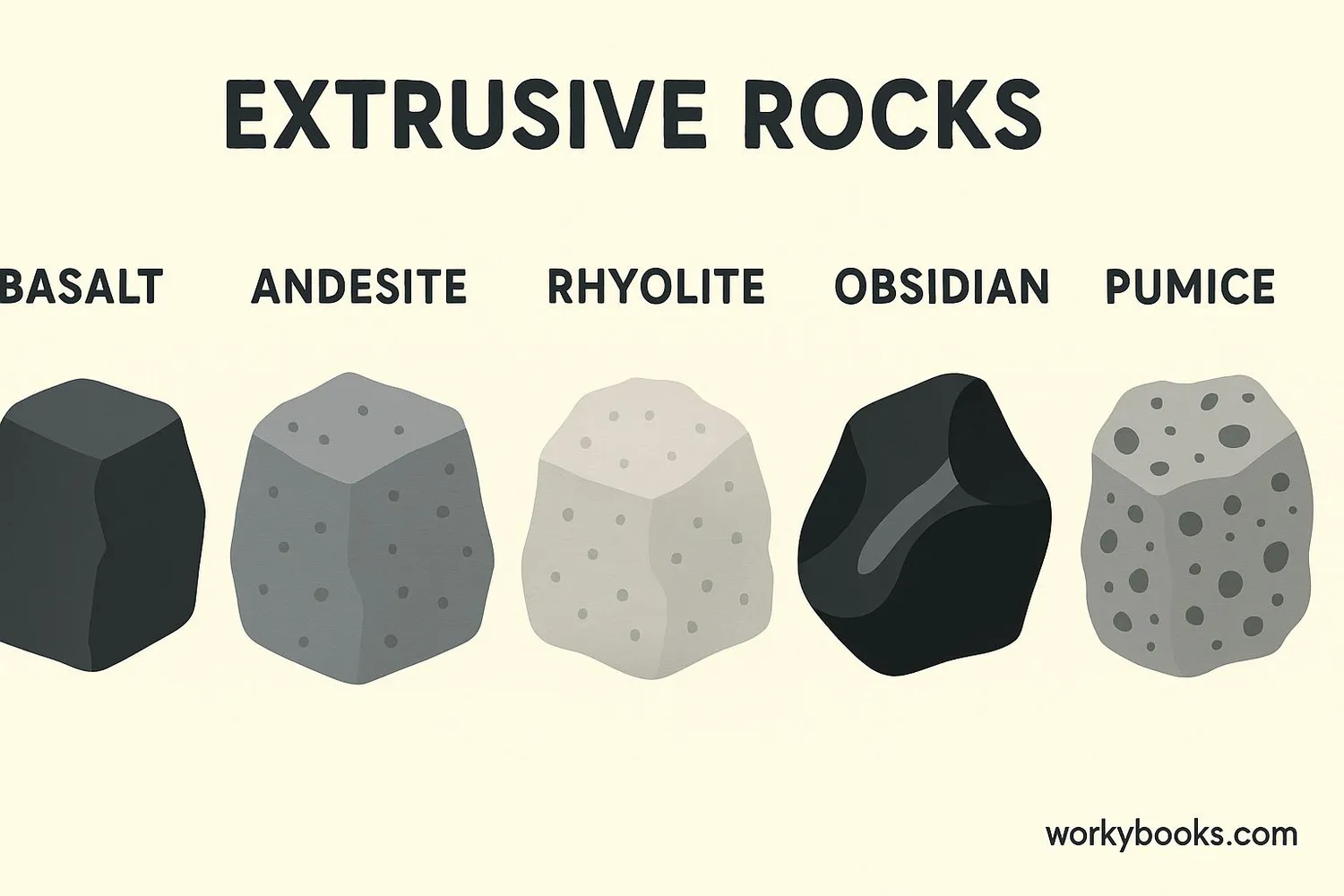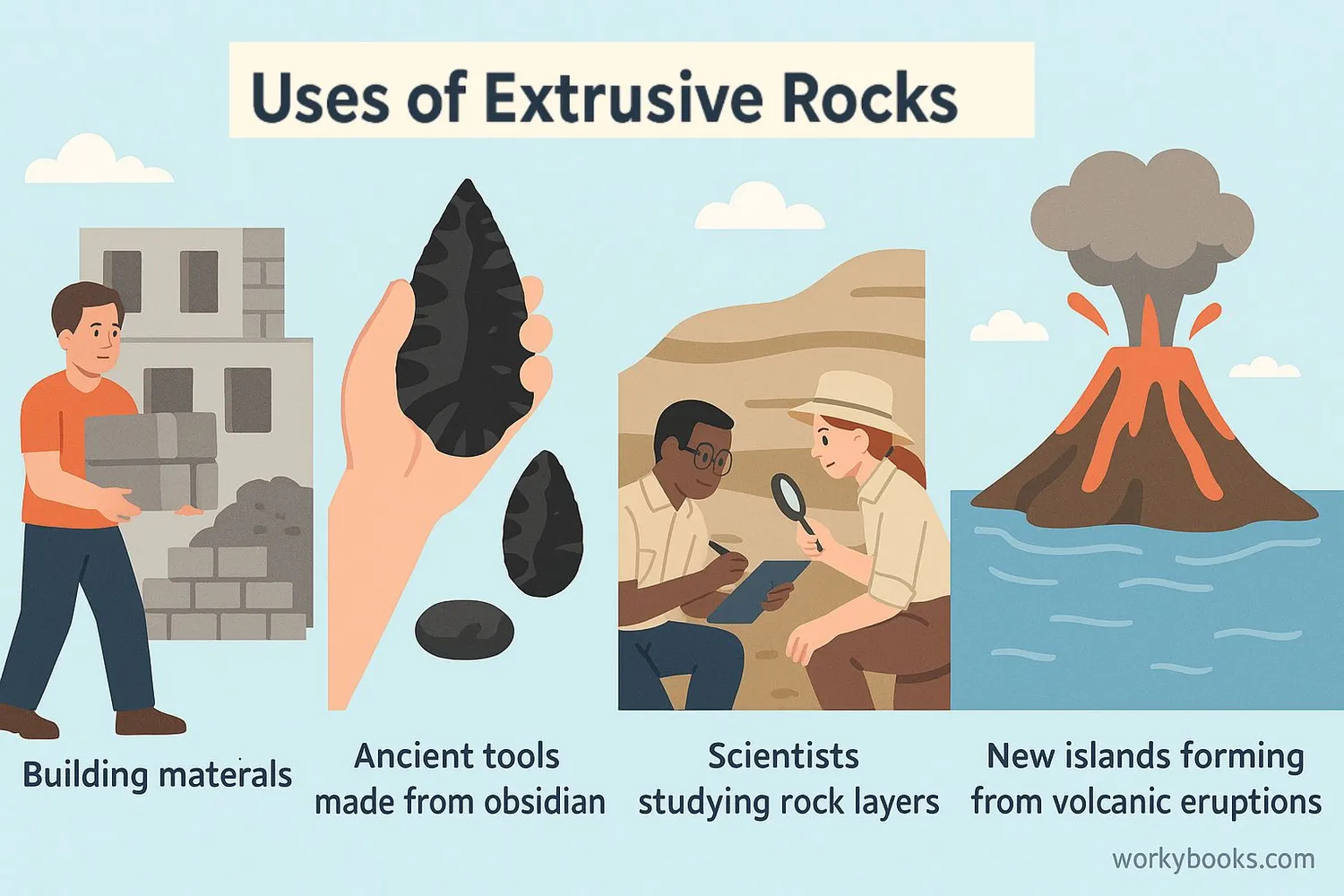Extrusive Rocks - Definition, Examples, Quiz, FAQ, Trivia
Discover how volcanic rocks form from fiery lava and magma!
What are Extrusive Rocks?

Extrusive rocks, also called volcanic rocks, are a type of igneous rock that form when molten magma from deep inside the Earth erupts onto the surface as lava and then cools quickly. Because they cool rapidly, extrusive rocks have very fine crystals or sometimes no crystals at all!
Think of extrusive rocks as the Earth's way of creating new land. When volcanoes erupt, they spew out hot, liquid rock that flows across the landscape. As this lava cools down, it solidifies into solid rock. This process happens all around the world, from the Hawaiian Islands to the ocean floor!
Did You Know?
Most of the Earth's surface is covered by extrusive rocks, especially on the ocean floor where they form from underwater volcanic eruptions!
How Extrusive Rocks Form

Extrusive rocks form through an amazing geological process that begins deep within the Earth. Here's how this fiery rock-making process works:
Magma Formation
Extreme heat melts rock deep underground, creating magma
Volcanic Eruption
Pressure forces magma up through volcanoes as lava
Surface Flow
Lava flows across the Earth's surface
Rapid Cooling
Lava cools quickly when exposed to air or water
Rock Formation
Cooled lava solidifies into extrusive igneous rock
The speed of cooling affects the rock's texture. Because extrusive rocks cool quickly on the surface, mineral crystals don't have time to grow large. This is why volcanic rocks like basalt have a fine-grained texture that sometimes looks almost smooth.
Cooling Fact!
Some extrusive rocks like obsidian cool so quickly that no crystals form at all, creating volcanic glass that can be sharper than surgical steel!
Types of Extrusive Rocks

There are several types of extrusive rocks, each with unique characteristics based on their mineral composition and how quickly they cooled. The main types include:
Basalt
Dark, fine-grained rock that makes up most of the ocean floor
Andesite
Medium-gray rock typically found in volcanic mountain ranges
Rhyolite
Light-colored rock with high silica content, often with flow patterns
Obsidian
Volcanic glass that forms when lava cools extremely rapidly
Pumice
Lightweight, porous rock filled with gas bubbles that forms during explosive eruptions
Each type of extrusive rock tells a story about the volcanic eruption that created it. Basalt forms from fluid lava flows, while pumice and obsidian form from more explosive eruptions with different gas content and cooling rates.
Why Extrusive Rocks are Important

Extrusive rocks are incredibly important for both practical uses and scientific understanding. Here's why they matter:
Building Materials
Basalt and other extrusive rocks are used in construction and road building
Tools and Abrasives
Obsidian makes sharp tools; pumice is used for polishing
Earth's History
Scientists study extrusive rocks to understand past volcanic activity and Earth's formation
Beyond practical uses, extrusive rocks help us understand:
• How volcanoes work and predict future eruptions
• How continents and ocean floors form and change over time
• The geological history of our planet through rock layers
• How new land is created, like the Hawaiian Islands
Without extrusive rocks, we wouldn't have many of the landscapes we see today, and we'd know much less about how our dynamic planet works!
Extrusive Rocks Knowledge Check
Test what you've learned about extrusive rocks with this quiz! Answer all 5 questions to check your understanding.
Frequently Asked Questions
Here are answers to some common questions about extrusive rocks:
Amazing Rock Facts
Discover some fascinating facts about extrusive rocks!
Ocean Floor Coverage
Over 90% of the Earth's ocean floor is made of basalt, making it the most common extrusive rock on our planet!
Growing Islands
The Hawaiian Islands are entirely made of basalt that erupted from a volcanic hot spot. The island of Hawaii is still growing from ongoing eruptions!
Ancient Tools
Obsidian was prized by ancient civilizations for making sharp tools and weapons. Some obsidian blades are still sharper than modern surgical steel!
Floating Rocks
Pumice is so full of air bubbles that it can float on water! Large pumice rafts sometimes form after volcanic eruptions and can float for months.


